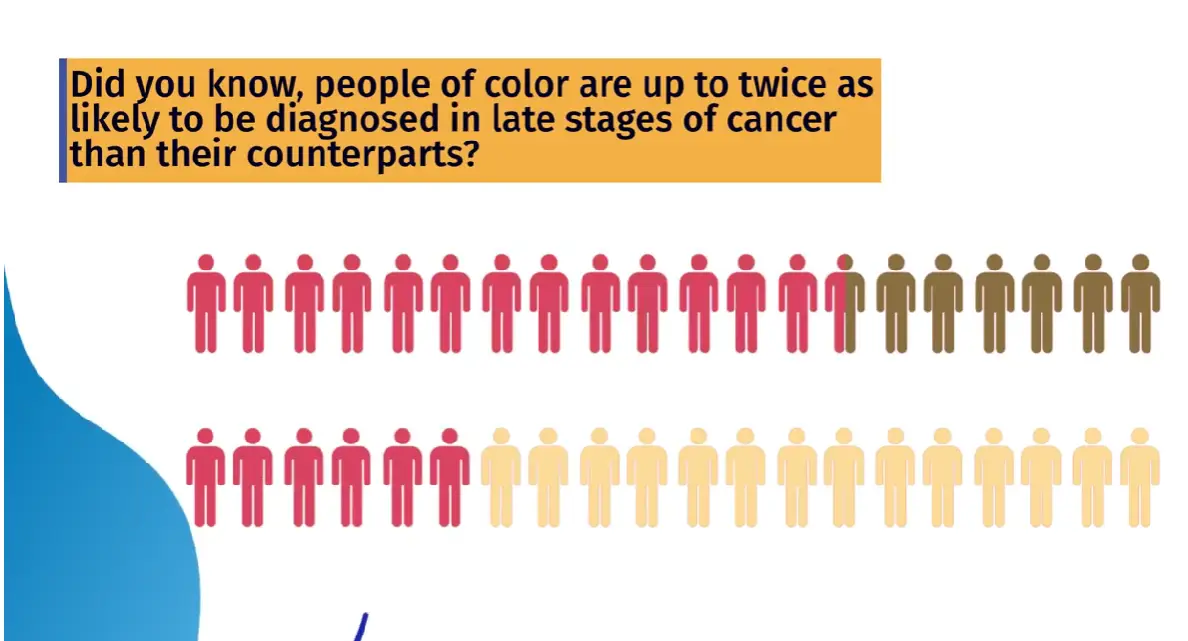
Innovation
|09 November 2022
When cancer is found earlier, treatment is more likely to be successful. Too often, diagnosis occurs at later stages, after symptoms have developed and cancer has spread. This is particularly true of unscreened cancers, and especially so among underserved communities, like racial and ethnic minorities and rural populations.
Only five cancer types have established and recommended screenings: breast, cervical, colorectal, prostate and lung cancer. For cancer types without screening modalities, such as esophageal, pancreatic, kidney, ovarian and stomach, emerging technologies for multicancer early detection (MCED) offer the promise of earlier detection, diagnosis and treatment. Via a blood draw, these tests can detect multiple types of cancers before individuals become symptomatic.


Knowing how to combat cancer goes beyond screening. Diagnostic tools are used to help locate and treat cancer. Right now, there are a number of ways to diagnose cancer, here is a list of some of the most common examples.
A procedure in which a small amount of radioactive glucose (sugar) is injected into a vein, and a scanner is used to make detailed, computerized pictures of areas inside the body where the glucose is taken up. Because cancer cells often take up more glucose than normal cells, the pictures can be used to find cancer cells in the body. Also called positron emission tomography scan.
In most cases, doctors need to do a biopsy to diagnose cancer. A biopsy is a procedure in which the doctor removes a sample of tissue. A pathologist looks at the tissue under a microscope and runs other tests to see if the tissue is cancer. The pathologist describes the findings in a pathology report, which contains details about your diagnosis. Pathology reports play an important role in diagnosing cancer and helping decide treatment options. Learn more about pathology reports and the type of information they contain.
Magnetic Resonance Imaging (MRI) is a non-invasive imaging technology that produces three-dimensional detailed anatomical images. It is often used for disease detection, diagnosis, and treatment monitoring. It is based on sophisticated technology that excites and detects the change in the direction of the rotational axis of protons found in the water that makes up living tissues.
An ultrasound exam uses high-energy sound waves that people cannot hear. The sound waves echo off tissues inside your body. A computer uses these echoes to create pictures of areas inside your body. This picture is called a sonogram.
During an ultrasound exam, you will lie on a table while a tech slowly moves a device called a transducer on the skin over the part of the body that is being examined. The transducer is covered with a warm gel that makes it easier to glide over the skin.
There are many routes one can take if faced with a cancer diagnosis. Listed below are just some of the options that are available.
Treatment that uses drugs to stop the growth of cancer cells, either by killing the cells or by stopping them from dividing. Chemotherapy may be given by mouth, injection, or infusion, or on the skin, depending on the type and stage of the cancer being treated. It may be given alone or with other treatments, such as surgery, radiation therapy, or biologic therapy.
A type of radiation therapy that uses streams of protons (tiny particles with a positive charge) to kill tumor cells. This type of treatment can reduce the amount of radiation damage to healthy tissue near a tumor. It is used to treat cancers of the head and neck and organs such as the brain, eye, lung, spine, and prostate. Proton beam radiation is different from x-ray radiation.
A type of therapy that uses substances to stimulate or suppress the immune system to help the body fight cancer, infection, and other diseases. Some types of immunotherapy only target certain cells of the immune system. Others affect the immune system in a general way. Types of immunotherapy include cytokines, vaccines, bacillus Calmette-Guerin (BCG), and some monoclonal antibodies.
A form of medicine that uses information about a person’s own genes or proteins to prevent, diagnose, or treat disease. In cancer, precision medicine uses specific information about a person’s tumor to help make a diagnosis, plan treatment, find out how well treatment is working, or make a prognosis. Examples of precision medicine include using targeted therapies to treat specific types of cancer cells, such as HER2-positive breast cancer cells, or using tumor marker testing to help diagnose cancer. Also called personalized medicine
Racial and ethnic minorities in the US are among those diagnosed with unscreened cancers at later stages compared to non-Hispanic whites. Continued development, adoption and access to these technologies may lead to better and more equitable cancer outcomes for these populations.
Detecting cancer early, before it has spread throughout the body, saves lives. Because treatment is more effective when cancer is detected early, existing screenings such as mammograms, colonoscopies, and pap smears have led to a substantial reduction in cancer mortality. However, recommended screenings available today detect only 5 cancers - breast, cervical, colorectal, lung, and prostate cancer - meaning there are no screenings for most cancers. In fact, over 70% of the 600,000 cancer deaths each year are from cancers without early detection tests. Uptake of and adherence to recommended screenings varies significantly for the 5 available single-cancer screenings available today.



National Minority Quality Forum is a research and educational organization dedicated to ensuring that high-risk racial and ethnic populations and communities receive optimal health care. This nonprofit, nonpartisan organization integrates data and expertise in support of initiatives to eliminate health disparities.
 1201 15th Street, NW, Suite 340, Washington, DC 20005
1201 15th Street, NW, Suite 340, Washington, DC 20005
CLICK HERE TO SAVE THE DATE NOW
FOLLOW US ON: